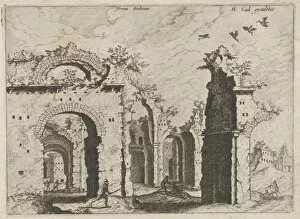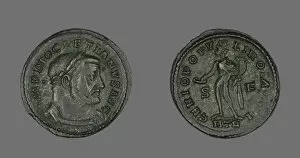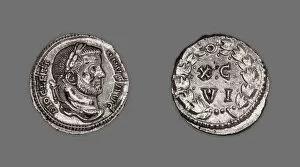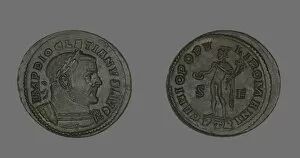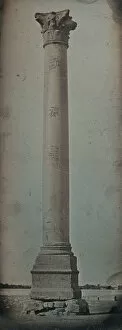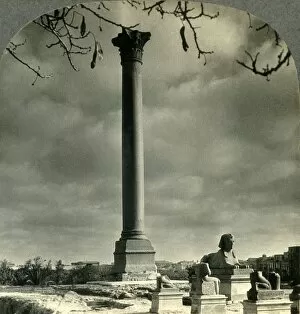Gaius Aurelius Valerius Diocletianus Collection
Gaius Aurelius Valerius Diocletianus, commonly known as Diocletian, was a Roman emperor who ruled from 284 to 305 AD
For sale as Licensed Images
Choose your image, Select your licence and Download the media
Gaius Aurelius Valerius Diocletianus, commonly known as Diocletian, was a Roman emperor who ruled from 284 to 305 AD. He is remembered for his significant contributions to the empire's military and administrative reforms. Diocletian's reign saw the construction of several impressive structures, such as the Baths of Diocletian, which were among the largest public baths in ancient Rome. These baths showcased his grandeur and power, reflecting his desire to leave a lasting legacy. Coins portraying Emperor Diocletian provide us with a glimpse into his image and influence during that time period. From gold aureus coins issued by him to antoniniani depicting his rule, these currency pieces serve as historical artifacts that shed light on the economic stability he sought to maintain. Pompey's Column in Alexandria stood tall as a landmark for sailors navigating their way through treacherous waters. This column represented not only Diocletian's appreciation for history but also symbolized his connection to previous rulers who left their mark on Egypt. In late 15th-century artwork titled "Saint Sebastien before the Emperors Diokletian and Maximilian, " we see how artists depicted this powerful ruler alongside other influential figures of that era. It showcases how important he was perceived even centuries after his reign. Diocletian's leadership brought about stability during turbulent times within the Roman Empire. His efforts aimed at strengthening its borders against external threats while implementing political reforms internally helped restore order and prosperity. Overall, Gaius Aurelius Valerius Diocletianus played an essential role in shaping Rome's history through architectural marvels like the Baths of Diocletian and Pompey's Pillar, numismatic evidence found in various coins bearing his likeness, artistic representations showcasing him alongside other prominent figures of that time period like Saint Sebastien before emperors Maximian and Diocletian, and his administrative reforms that brought stability to the


